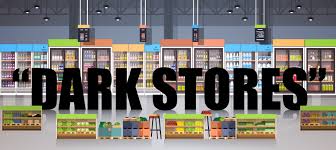How do E-commerce Projections for 2020 and Beyond Impact Dark Store Planning?
There are many technological innovations and solutions available to Retailers to protect their employees and their customers from COVID-19. The next question at this time seems to be how Retail, as an industry, best goes about facilitating the changing landscape of customer purchases – including BOPIS, BOPAC, Delivery, and Dark Stores. Let’s take a closer look at Dark Stores and where we feel they fit best in this planning.
How do Dark Stores fit into today’s retail landscape?
Dark Stores have been in play since at least 2014 – with Tesco and other UK retailers looking forward to the challenge of efficient online shopping fulfillment. COVID-19 has been called The Great Accelerator when looking at the impact of e-commerce on the existing Retail landscape. While the numbers differ slightly based on which study you reference, CSA shared an Emarketer/DOC study which cited these numbers to consider when looking at Dark Stores and their place today, and tomorrow:
- Q2 2020 – 16.1% of all US retail sales took place online.
- 2020 Projection – 14.5% of US retail sales this year expected to be from e-commerce.
- 1% Annual gain though 2024 Projection that e*commerce sales will be 18.1% of total US retail sales.
Dark Stores will play a role in fulfillment when it comes to this growth. Grocery, as a sector, will be the most impacted and this shows clearly through the many companies utilizing Dark Store fulfillment options right now.
What do other sectors do? What problems are more pressing when it comes to clothing or specialty goods sellers?
Costs would seem to be the #1 problem. How much does it cost to get the real estate for a location to be set up as a Dark Store in a region with the shopper demand present to provide the proper return? How large do these spaces need to be, relative to traditional brand store locations?
Technology would seem to be the #2 problem – and the cost of tech can certainly be included in the #1 issue. What technology will support the best fulfillment design to fit needs?
Semi-Dark Stores may be the Answer
We think the answer lies with a hybrid form of the Dark Store – in this instance we will reference as a Semi-Dark Store. Allowing for a location to be open as a public facing store at the same time as acting as a localized fulfillment option will accomplish a number of things.
First, there will be revenue associated with shoppers visiting the stores. The numbers shared above on the growth of e-commerce shows a 1% annual increase. This could be larger…but even at double or triple that amount we are still at 30% or less of the total US retail spend being online. People still want to visit store locations – locations placed correctly, sized correctly, and with the right experience. Having a portion of the leased space open for a sales floor allows for customer shopping and there can be a back section, an upstairs section, or some other way to separate what space is needed to sustain Dark Store activities.
Second, there is technology being deployed now to make relatively small store spaces convertible into Micro Fulfillment Centers (MFCs) – spaces as small as 800 square feet. The decentralized fulfillment strategy can be done for significantly less than was formerly the case – technology combined with automation makes this an existing reality, today. (Really, 800 sq. ft.!)
Dark Stores are a way for a segment of Retail to be more efficient in the face of COVID-19, The Great Accelerator, and beyond. However, some segments of retail will benefit from examining the potential for Semi-Dark Stores to support their brand health moving forward.
If you are interested in discussing or learning more about what we are seeing with regard to Dark and Semi-Dark stores, let us know. E-commerce growth is a real thing – it is going to continue, and there are many ways to look to best position your brand for success.
